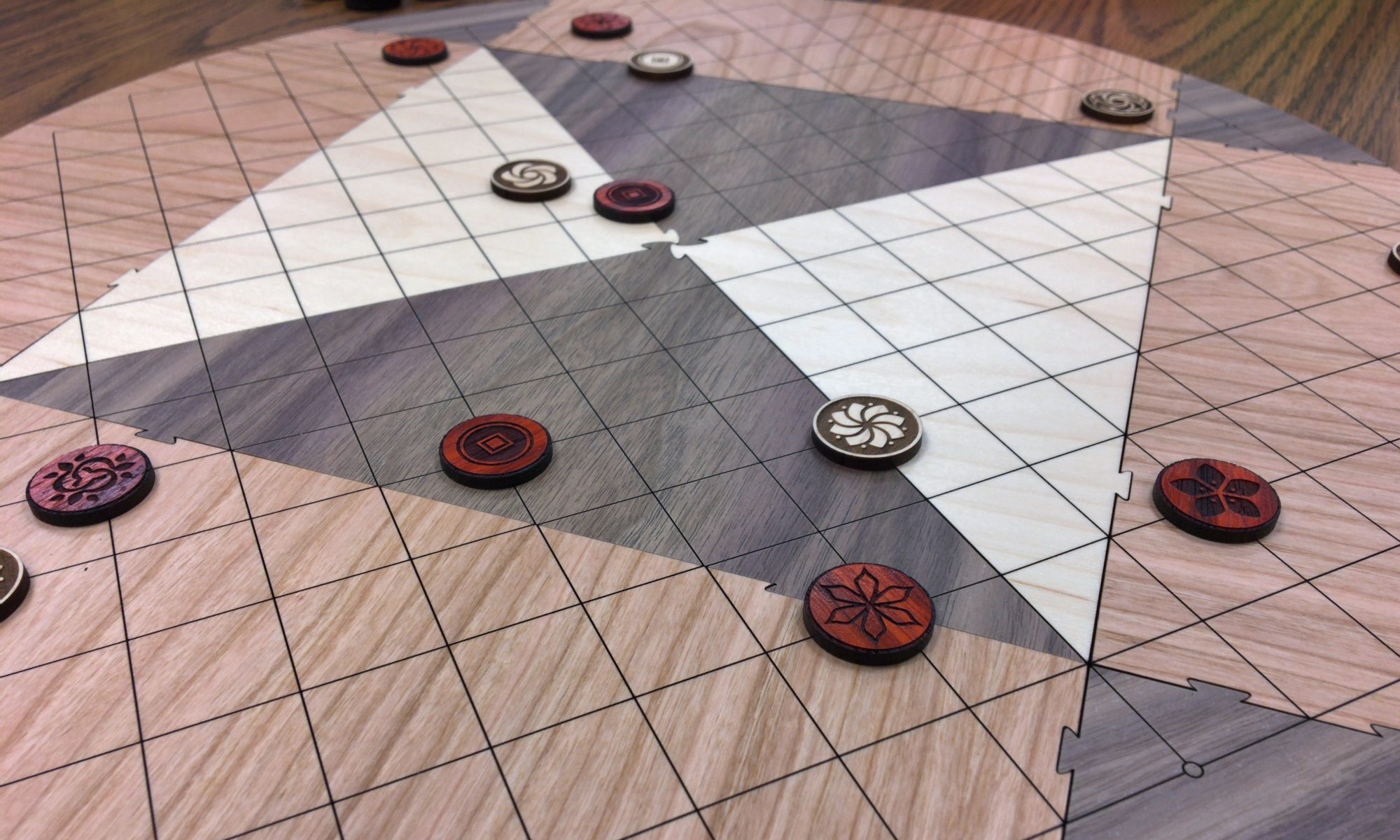A game by @SkudPaiSho. View the full Beyond The Edges of The Maps rules here.
Or go to the game at SkudPaiSho.com to try it out.
Got any questions or looking for people to play with? Join The Garden Gate Discord!
Beyond The Edges of The Maps is a two-player territory exploration game inspired by the world of The Wingfeather Saga. Players sail their ships and explore land in order to surround and discover more territory than their opponent.
Each turn, a player moves their ship to discover more land and also adds more land pieces to represent exploring uncharted territory. While players take turns moving and adding land pieces to the board, each player will try to discover more territory and overtake their opponent, eventually surrounding their opponent and claiming victory.
Beyond The Edges of The Maps
A fan-made game from the world of Aerwiar, by @SkudPaiSho
Objective
In Beyond The Edges of The Maps, or “Beyond The Maps”, or even just “Edges” as some call it, two players sail the world and discover land. The player with the most land discovered when the game ends is the winner.
Materials Needed to Play
To play Beyond The Maps, players will need a board, ship tokens, and land markers.
Board
Beyond The Maps is played on a large grid of squares. An 18×18 grid is the common full game, and a 12×12 is common for a shorter game.
Ship Tokens
Each player needs one ship token. In the game, the ship sails across the sea and discovers land. Most commonly, a ship token will match the color of the player’s land markers. But all that is required is that each ship is unique in some way to distinguish who it belongs to. Players will often carry their own handmade ship token to play with.
Land Markers
Each player needs a sufficient number of land markers. Each set of land markers should be a different color, most commonly one player will be dark and one player will be light. Land markers need only to fit inside the squares on the board and are commonly made of dark colored stones or light colored stones.
Game Setup
To begin the game, players place their ships in opposite corners of the board. The player who most recently touched their face to a ship’s sail goes first.
Playing
On a turn, a player will take two actions: explore by sea and explore by land. The actions may happen in any order, but it is most common to explore by sea first.
The exception is on the first player’s first turn, where they must only explore by sea.
Explore By Sea Action
To explore by sea, a player moves their ship through any spaces not claimed by land (empty spaces and the opponent’s ship) between 0 and 6 spaces to land on an empty space.
After the movement has ended, the player places a land marker on the square that the ship would move to if it moved one more step in the same direction it just moved. See examples (ship moves and highlighted land marker is placed):
If the ship stays in the same space instead of moving, a land marker may be placed on any adjacent space.
Note:
- If the ship ends movement near the edge of the board so the land marker target space is off the board, no land marker is placed.
- If the land marker target space is occupied by land owned by the player or is the space of the opponent’s ship, no land marker is placed.
- If the land marker target space is land of another player, the land marker is replaced with one belonging to the moving player.
Explore Land Action
To explore land, a player adds up to 3 land markers to the board. The first land marker is added starting next to an unconnected piece of land, also called a peninsula, which is a land marker that is only adjacent to up to one other land marker belonging to the same player. The next land markers must be placed adjacent to the previously placed land marker (they do not all need to be peninsulas during the second and third land marker placement). See example (first placed marker is shown, arrows indicate the trail of land markers placed):
If an area of completely surrounded spaces is created, empty spaces and opponent’s peninsula land pieces within the enclosed space are filled by or replaced with the player’s land markers (repeatedly until no peninsulas remain – that is, a string of land may be captured if it is not secure). The area must be completely surrounded by the player’s land markers – the edge of the board does not contribute to enclosing an area. See example:
| Before exploring by land: | Exploring by land: | Filling in enclosed land area: |
|---|---|---|
The Rules About What You Can’t Do
After any move or land marker placement (unless ending the game – see below), there must be a path of empty spaces on the board that connects the two ships. If the only moves available cause land to break the only path between the ships, no land marker is placed on that action.
Ending The Game
The game ends when one of the players’ ships is completely surrounded by land pieces or unable to move (remember that a ship is not blocked by the opponent’s ship).
A player’s score is the number of land markers they have on the board, and the player with the highest score wins!
